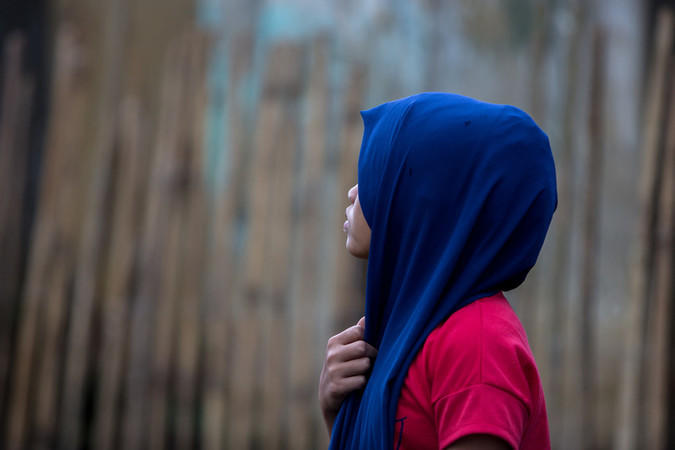Child Marriage Research Initiative
Evidence shows that child marriage—a practice that infringes on girls’ rights and negatively affects their health, education, psychosocial wellbeing, and lifelong development—can increase in humanitarian settings. Yet research on the drivers of child marriage is limited, and evidence on effective interventions is nearly absent from the global literature. The Human Rights Center’s Health and Human Rights Program partnered with Save the Children, Plan International, and local organizations in Jordan and Uganda to form the Child Marriage Research Initiative. The purpose of this long-term initiative is to strengthen efforts to prevent child marriage in humanitarian contexts. The initiative involves three phases:

Partners



Phase 1 (Completed 2018):
A review of child marriage prevention and response interventions in humanitarian and development contexts, including a desk review of the evidence and interviews to gather lessons learned from practitioners;
Phase 2 (Completed 2021):
A multi-country, participatory study in humanitarian contexts to identify drivers, decision-making factors, and community-based solutions related to child marriage prevention and response;
Phase 3 (Completed 2022):
A co-designed intervention, informed by girls’ voices and community stakeholders, to be piloted and evaluated in humanitarian contexts in Jordan and Uganda.
Our study engaged 280 girls ages 14-17 and 67 parents and caregivers and used innovative participatory methods, in addition to interviews, to give girls more ownership over the research and provide them with a variety of creative ways to express themselves and their opinions, thoughts, and ideas.
Key Findings Included:
- Addressing violence within the home is as important to addressing child marriage as violence outside the home. Programming should work to address child mistreatment, neglect, child abuse and other forms of violence, and heavy domestic workloads by educating caregivers on positive, engaged parenting and husbands on supportive partnership.
- Peer influence is just as important in marriage decision-making and psychosocial health for displaced girls as it is for girls at home. Practitioners should work to counteract negative peer pressure wherever possible and incorporate opportunities for positive peer pressure in programming, for example, by providing peer-to-peer counseling opportunities or offering social opportunities for married girls.

- Girls often play a role in marriage decision-making. While many girls have little to no say in marriage decision-making, a number of girls have a significant say in the final decision over whom and when to marry, and some have full autonomy. Practitioners should gain a clear understanding of the range of girls’ agency and design interventions that support girls in these decisions, creating an enabling environment for girls to delay marriage.
- Girls’ education is critical to preventing and responding to child marriage. While most displaced girls have access to primary and secondary schools, they often face a number of financial and practical barriers to accessing them, including school fees, lack of pads and sanitary products, long distances to schools, and discrimination against married or pregnant girls. Practitioners should prioritize doing whatever it takes to keep girls in school for as long as possible.

- Displaced communities still want sensitization and awareness-raising on child marriage. While ensuring basic needs are met is certainly the highest priority in the acute stages of an emergency, once a situation stabilizes, community members feel that sensitization efforts and programming to change social norms around marriage are critical. Displacement, and the upheaval of traditional family and community structures, provides the humanitarian community with a unique opportunity to help shift and redefine harmful marriage and gender norms.
- Financial support is a crucial component of child marriage programming. In particular, cash assistance to adolescent girls or their caregivers helps to relieve extreme financial hardship, offset financial incentives for child marriage, and enable them to meet basic needs – all major contributors to child marriage rates in displacement contexts.

Publications
News

June 17, 2021
Five ways to prevent child marriage in refugee communities: 280 girls speak out
Commentary — Berkeley Blog: Five ways to prevent child marriage in refugee communities: 280 girls speak out, by Julie Freccero and Audrey Taylor.


